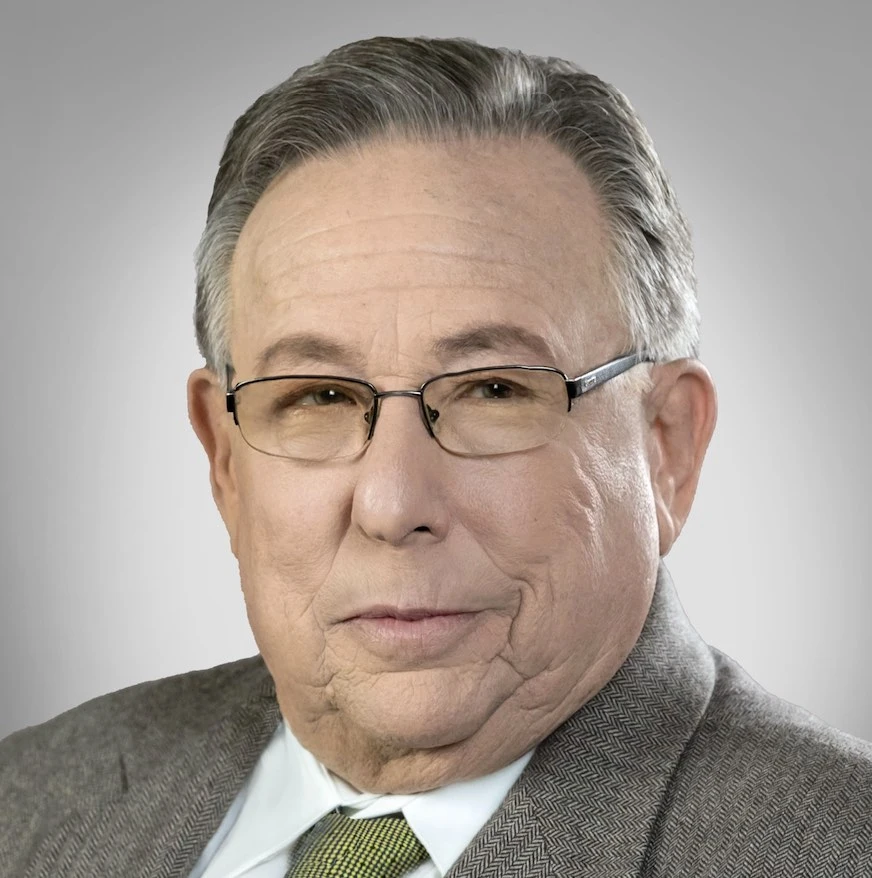Heroin, a highly addictive opioid derived from morphine, is notorious not only for its rapid effects but also for its devastating health consequences. One of the most alarming aspects of heroin addiction is opioid withdrawal syndrome.
Withdrawal can push individuals toward dangerous behaviors, such as needle-sharing, which increases the risk of overdose and severe infections. Given the situation’s urgency, healthcare providers and patients need to understand the detox process and available treatments.
Read on to explore what you need to know about heroin detox, withdrawal symptoms, and the importance of proper treatment.
Table Of Contents:
What is Heroin Detox?
Heroin is a highly addictive and illicit opioid processed from the morphine drug, a substance naturally derived from certain poppy plants. Known for its rapid effects, heroin produces intense euphoria but also carries significant risks, including addiction, fatal overdoses, and severe health consequences like hepatitis and HIV from needle-sharing.
When someone aims to break free from addiction, they undergo drug detox. Heroin detox is the process of eliminating heroin from the body while managing the withdrawal symptoms that occur as the body adjusts to the absence of the drug.
Because heroin detox can be potentially life-threatening due to the severity of withdrawal symptoms, it’s essential to undergo this process under medical supervision and not attempt to go cold turkey or try it at home.
What is Heroin Withdrawal?
Withdrawal from heroin refers to the range of physical and psychological symptoms that occur when someone dependent on heroin suddenly reduces or stops using the drug.
This withdrawal process is a critical part of detoxification and typically involves the broader opioid withdrawal syndrome, which encompasses symptoms associated with the cessation of all opioid substances. During heroin withdrawal, individuals may experience a variety of symptoms, which can vary in severity and duration, often beginning within 8-24 hours after the last dose and peaking within a few days.
Heroin Withdrawal Symptoms
As an opioid, heroin withdrawal follows the pattern of the opioid withdrawal syndrome. Individuals dependent on heroin may experience a range of symptoms as their bodies react to the absence of the drug.
Common heroin withdrawal symptoms include:
- Intense Cravings: A strong desire to use heroin again, which can be overwhelming.
- Anxiety and Agitation: Feelings of restlessness, irritability, and anxiety are common as the body adjusts.
- Muscle and Joint Pain: Many individuals report aches and pains.
- Nausea and Vomiting: Gastrointestinal distress is frequent during withdrawal.
- Sweating and Chills: Profuse sweating or cold flashes may occur, often leading to discomfort.
- Insomnia: Difficulty sleeping or staying asleep is common during withdrawal.
- Diarrhea: Many experience gastrointestinal issues, including diarrhea.
- Runny Nose and Sneezing: Symptoms like those of a cold can occur.
- Cramping: Abdominal cramps can be painful and distressing.
- Increased Heart Rate and Blood Pressure: Physiological responses may lead to heightened heart rates and blood pressure.
As individuals increase their use of opioids, they often focus on obtaining opioids primarily to avoid withdrawal symptoms—usually referred to as “getting sick.”
Consequently, this focus can result in riskier drug use. Withdrawal is a significant barrier for people who inject drugs (PWID) in their efforts to reduce these symptoms. This creates a cycle where the urgency to avoid or ease withdrawal symptoms drives individuals to seek out opioids even more desperately.
How To Detox From Heroin?
There are several effective treatments for heroin use disorder, including behavioral therapies and medications. Both methods help improve brain function and behavior, leading to better employment outcomes and reduced risks of HIV, other diseases, and criminal activity.
While behavioral and medication-based treatments can be beneficial on their own, studies indicate that combining both approaches is often the most effective strategy for many individuals.
Seek Professional Help
Detoxing from heroin can be a challenging process, and it’s essential to do it under medical supervision.
Contact a healthcare provider or addiction specialist who can safely guide you. They will assess your situation, monitor your health, and provide emotional support. Joining a detox facility may also offer a structured environment that can increase your chances of long-term sobriety.
Medication-Assisted Treatment (MAT)
Medication-assisted treatment is a cornerstone of effective heroin detox.
These medications work by stabilizing brain chemistry and reducing the severity of withdrawal symptoms. Your healthcare provider will determine the appropriate medication and dosage based on your needs.
Medications for heroin withdrawal usually include:
-
- Methadone medication: Long-acting opioid agonist to reduce cravings and withdrawal symptoms.
- Buprenorphine: Partial opioid agonist with a lower overdose risk, easing withdrawal and cravings.
- Naltrexone: Opioid antagonist that blocks heroin’s effects, preventing relapse, but doesn’t relieve withdrawal.
- Naloxone (Narcan): Opioid antagonists used to reverse overdoses. Acts quickly to restore normal breathing.
- Lofexidine: Non-opioid used to ease withdrawal symptoms, reducing anxiety, agitation, and chills.
- Clonidine: Non-opioid that alleviates withdrawal symptoms like anxiety and muscle aches.
Create a Supportive Environment
Establishing a safe and drug-free environment is crucial for a successful detox. This might involve removing any triggers or substances from your living space and surrounding yourself with supportive friends and family members who understand your journey.
Consider entering a detox facility or drug rehabilitation center, where you can receive comprehensive care and support from professionals and peers who have had similar experiences.
Therapy and Counseling
Addressing the psychological aspects of addiction is crucial for long-term recovery. Engaging in therapy or counseling can provide valuable insights and coping strategies.
Cognitive-behavioral therapy (CBT) is particularly effective in helping individuals recognize and change negative thought patterns related to drug use. Group therapy or support groups can also foster a sense of community and shared experience, which can be incredibly beneficial during detox and beyond.
Aftercare Planning
Detoxing is just the beginning of the recovery journey. Aftercare planning involves creating a strategy for ongoing support once detox is complete.
This may include outpatient therapy, regular check-ins with a counselor, and participation in support groups like Narcotics Anonymous (NA). Aftercare helps individuals maintain their sobriety and provides resources to address any challenges that may arise in the future.
How Long Does Heroin Detox Take?
Opioid withdrawal can happen when a person who is physically dependent on opioids suddenly stops or significantly reduces their dosage.
The onset, peak intensity, and duration of withdrawal symptoms vary based on the specific opioid involved. For instance, heroin withdrawal symptoms can start as early as 4 to 6 hours after the last use, peak around 24 to 48 hours, and may last anywhere from 7 to 14 days.
Heroin Withdrawal Timeline
The heroin detox and withdrawal experience vary depending on factors like the duration and intensity of use, but it typically follows a timeline with distinct stages.
From the early symptoms of anxiety and restlessness to the lingering effects of post-acute withdrawal syndrome (PAWS), understanding this timeline is crucial for anyone seeking recovery.
Find below a standard timeframe for heroin detox:
| Stage | Time Frame | Withdrawal Symptoms |
|---|---|---|
| Early Withdrawal | 4-6 hours after last use | Anxiety, restlessness, sweating, runny nose, yawning, muscle aches |
| Acute Withdrawal | 24-48 hours after last use | Peak symptoms: intense muscle aches, sweating, nausea, vomiting, diarrhea, cramps |
| Late Withdrawal | 3-5 days | Gradual reduction of symptoms, but still discomfort: fatigue, chills, body aches |
| Extended Withdrawal | 7-14 days | Lingering symptoms: mild cravings, fatigue, insomnia, irritability |
| Post-Acute Withdrawal (PAWS) | Weeks to months after detox | Intermittent symptoms: mood swings, anxiety, depression, sleep disturbances, cravings |
PAWS is a lesser-known aspect of substance dependence and withdrawal, but its intensity and duration significantly affect a person’s ability to quit addictive substances. It can result in slow-reversing or permanent damage to the neurons in the central nervous system (CNS).
Effectively managing PAWS symptoms is crucial to preventing relapse, particularly during the first 12 months after quitting, when the risk of relapse is at its peak. The longer someone maintains abstinence, the lower the likelihood of relapse becomes.
Best Heroin Detox Center Near Me
The best way to tackle the challenges of post-acute withdrawal syndrome (PAWS) and ensure a successful recovery from heroin addiction is to find a professional detox facility.
These centers offer comprehensive support, medical supervision, and tailored treatment plans to help manage the difficult symptoms of withdrawal and PAWS, reducing the risk of relapse. Choosing the right detox center can make all the difference in your journey toward long-term sobriety.
Here are some tips for finding the best heroin treatment and detox center near you:
- Ensure reputable organizations like the Joint Commission or CARF accredit the facility.
- Verify that the center offers 24/7 medical care, especially if you’re at risk of severe withdrawal symptoms.
- Look for a facility that offers comprehensive care (i.e., counseling or medication-assisted treatment).
- Consider whether the location is convenient and whether the place suits your personal preference.
- Ensure the facility accepts your insurance or offers rehab payment plans.
Don’t Get Caught Up in Heroin Addiction
Breaking the cycle of heroin use and mitigating the associated health risks requires effective drug interventions that focus on reducing exposure to withdrawal episodes and minimizing engagement in high-risk injecting networks.
By seeking help from a professional detox facility, individuals can access the medical support, therapies, and long-term strategies needed to manage withdrawal and post-acute withdrawal syndrome (PAWS). Detox centers offer personalized care, medication-assisted treatments, and aftercare programs to reduce the risk of relapse and help you stay on the path to recovery.
If you or a loved one is struggling with heroin addiction, contact a local rehab center to discuss personalized treatment options based on your medical needs.
People Also Ask
How long does it take to detox from heroin?
Detoxing from heroin typically lasts between 7 to 14 days, with acute withdrawal symptoms peaking around 24 to 48 hours after the last use, but some may experience lingering effects for weeks.
How to detox from heroin at home?
Detoxing from heroin at home is not recommended due to severe withdrawal symptoms. However, if necessary, consult a doctor, taper the dose gradually, stay hydrated, and consider over-the-counter medications for symptom relief.
What is heroin detox like?
Heroin detox involves intense physical and psychological symptoms, including anxiety, nausea, muscle aches, and cravings. The process can be challenging, with medical supervision recommended to ensure safety and comfort during withdrawal.
Page Sources
- Keck School of Medicine of USC. (2023, November 26). Opioid withdrawal increases health risks for people who inject drugs. Newsroom. https://keck.usc.edu/news/opioid-withdrawal-increases-health-risks-for-people-who-inject-drugs/
- Shah, M., & Huecker, M. R. (2023, July 21). Opioid withdrawal. StatPearls - NCBI Bookshelf. https://www.ncbi.nlm.nih.gov/books/NBK526012/
- World Health Organization. (2009). Withdrawal management. Clinical Guidelines for Withdrawal Management and Treatment of Drug Dependence in Closed Settings - NCBI Bookshelf. https://www.ncbi.nlm.nih.gov/books/NBK310652/
- Bluthenthal, R. N., et al. (2020). Opioid withdrawal symptoms, frequency, and pain characteristics as correlates of health risk among people who inject drugs. Drug and Alcohol Dependence, 211, 107932. https://doi.org/10.1016/j.drugalcdep.2020.107932
- Pergolizzi, J. V., Raffa, R. B., & Rosenblatt, M. H. (2020). Opioid withdrawal symptoms, a consequence of chronic opioid use and opioid use disorder: Current understanding and approaches to management. Journal of Clinical Pharmacy and Therapeutics, 45(5), 892-903. https://doi.org/10.1111/jcpt.13114
- What are the treatments for heroin use disorder? | National Institute on Drug Abuse. (2021, April 13). National Institute on Drug Abuse. https://nida.nih.gov/publications/research-reports/heroin/what-are-treatments-heroin-use-disorder
- Alsheikh, M. Y. (2021). Post-Acute Withdrawal Syndrome: The Major Cause of Relapse among Psychoactive Substances Addicted Users. Archives of Pharmacy Practice, 12(4), 91–97. https://doi.org/10.51847/ioicfujpnm

 Authored by
Authored by  Reviewed by
Reviewed by 